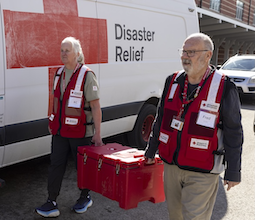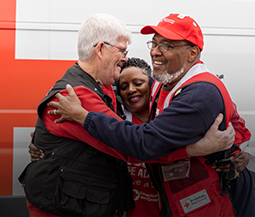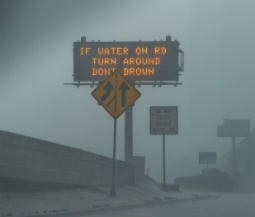The best way to protect your household from the effects of a disaster is to have a disaster plan. If you are a pet owner, that plan must include your pets. Being prepared can save their lives.
Know a Safe Place to Take Your Pets
If you have to evacuate your home during a disaster, the best way to protect your pets is to evacuate them too. If it's not safe for you to stay behind then it's not safe to leave pets behind either.
- Know which hotels and motels along your evacuation route will accept pets in an emergency. Call ahead for reservations if you know you may need to evacuate. Ask if no pet policies could be waived in an emergency.
- If you are going to a Red Cross shelter, our shelter workers will do all they can to accommodate household pets. However, depending on the situation, pets may need to be housed in a different location with support from animal welfare groups. Service animals that assist people with disabilities are always welcome in Red Cross shelters.
- Know which friends, relatives, boarding facilities, animal shelters or veterinarians can care for your animals in an emergency. Prepare a list with phone numbers.
- Although your animals may be more comfortable together, be prepared to house them separately.
- Include your pets in evacuation drills so that they become used to entering and traveling in their carriers calmly.
- Make sure that your pet’s vaccinations are current and that all dogs and cats are wearing collars with securely fastened, up-to-date identification. Many pet shelters require proof of current vaccinations to reduce the spread of disease.
- Consider having your pet “microchipped” by your veterinarian.
- Read more about our safety tips for traveling with your pet.









